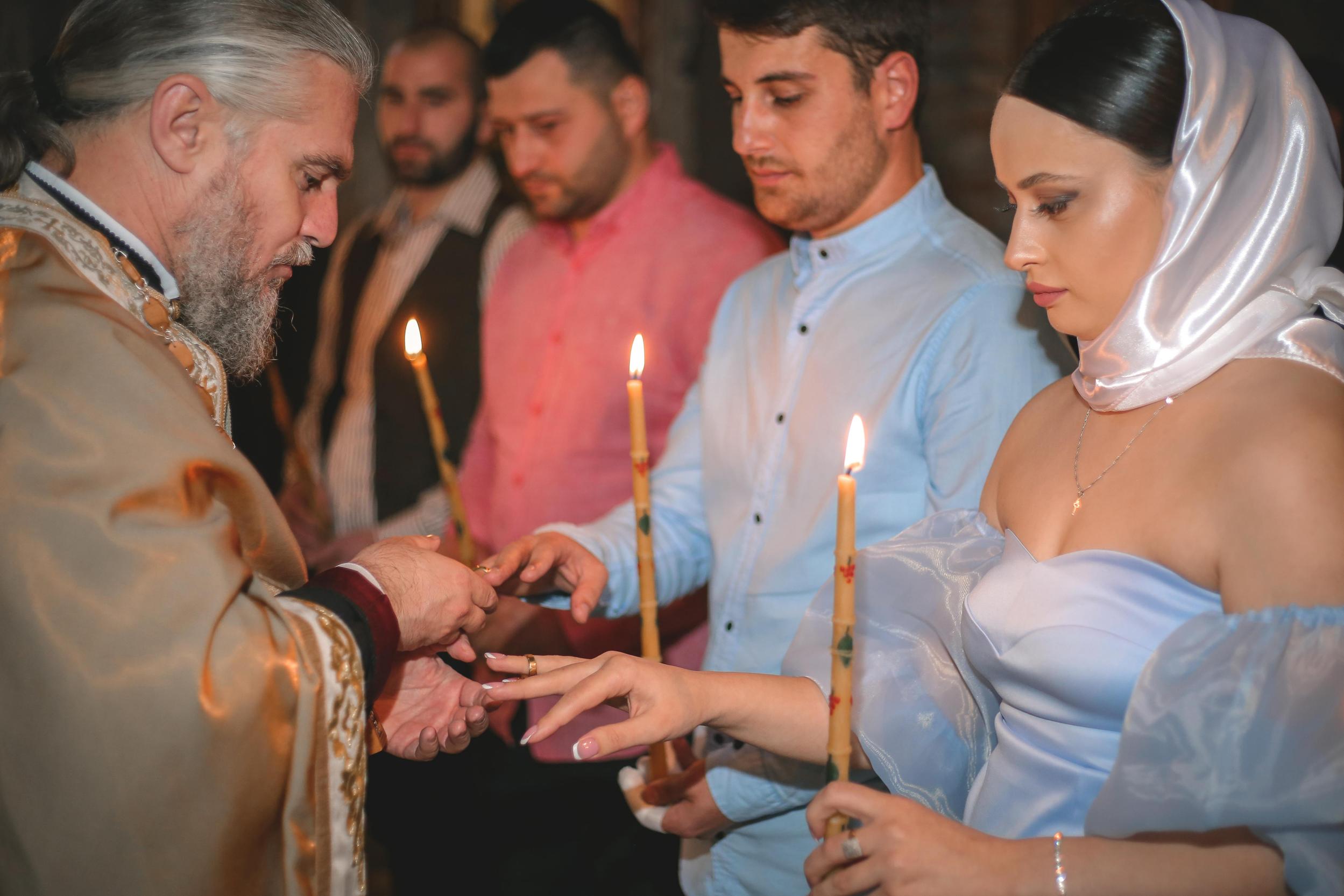Introduction
The wedding ring is a timeless symbol of love and commitment in Christian marriages. Its importance and meaning have evolved significantly over the centuries. From ancient customs to contemporary practices, wedding rings carry profound historical and spiritual significance. By exploring their journey through time, we can better understand their importance in Christian traditions today.

Ancient Origins of Wedding Rings
The tradition of wedding rings predates Christianity, tracing back to ancient Egypt and Rome. Egyptians considered the circle a symbol of eternity, and they fashioned rings from materials like hemp and reeds to signify everlasting love. These early rings were worn on the fourth finger of the left hand, a practice rooted in the belief that this finger contained the ‘vena amoris’ or the vein of love directly connected to the heart.
Romans adopted this tradition, introducing rings made of more durable materials like iron and gold. However, it wasn’t merely about love; Roman rings also symbolized a contractual agreement between families. These customs set a precedent that would influence early Christian practices.
Symbolism of Rings in Christianity
Christianity embraced and adapted the symbolism of rings, infusing them with deeper spiritual meaning. The circle of the ring represents God’s eternal love and the unending bond between husband and wife. The materials used in crafting the ring also hold significance, with gold and precious stones symbolizing purity, rarity, and strength—qualities idealized in Christian marriage.
Religious ceremonies often blessed these rings, and they became an integral part of the sacred vows exchanged between couples. The Christian adaptation of rings instantiated an enduring symbol of spiritual and emotional fidelity, reflecting the divine covenant between Christ and the Church.

Wedding Rings During the Medieval and Renaissance Periods
As Christianity grew and spread throughout Europe, wedding rings became more ornate during the Medieval and Renaissance periods. Rings from this time often featured detailed engravings, inscriptions, and embedded jewels. The practice of inscribing Bible verses or significant dates onto the rings became common, adding a personalized, spiritual touch.
Renaissance brought about a renaissance in design and artistry. Rings became elaborate, featuring intricate metalwork and an array of gemstones. These luxurious rings illustrated not only deep personal commitment but also social status and wealth. Marriages, during this time, merged both the deeply spiritual and socio-economic aspects of life.
Such developments mirrored the increasing role of rings in religious rituals. Churches began to incorporate elaborate rites centered around the exchange of rings, reinforcing their role as divine symbols of marriage.
The Reformation and Post-Reformation Development
The Reformation period brought significant changes to the perception and practice of wedding rings among Christians. Protestant reformers like Martin Luther questioned many ecclesiastical traditions, aiming to return to a more scripturally focused practice. This movement led to a simplified view of wedding rings that emphasized their biblical symbolism rather than their material opulence.
In Post-Reformation Europe, various Protestant denominations adopted different approaches. Some retained the traditional use of rings, while others minimized their role. The Puritans, for instance, preferred simpler wedding bands made of plain metal, reflecting their values of modesty and religious purity.
Thus, the Reformation did not abolish the tradition of wedding rings but diversified their significance and use across different Christian practices. The rings evolved into more than mere ornaments; they became testaments of personal faith and devotion.

Contemporary Christian Practices and Trends
In contemporary Christian marriages, wedding rings continue to symbolize enduring love and faith. While traditional gold bands remain popular, modern couples often choose rings made from a variety of materials like platinum and titanium, and customize them with unique designs and engravings.
Today’s ceremonies often include elaborate rituals that emphasize the mutual exchange of rings, highlighting equality and reciprocity in marriage. Some denominations, such as the Roman Catholic Church, still require specific blessings for the rings, while others focus on the personal significance attributed to these enduring symbols.
Engagement rings, primarily featuring diamonds, have also become more prevalent in Christian traditions. This custom gained momentum in the 19th and 20th centuries, symbolizing a promise and commitment preceding the marriage vows.
Even with contemporary trends and material innovations, the essence of the wedding ring remains grounded in its historical and spiritual roots. The circle continues to signify eternity, the materials reflect purity and permanence, and their exchange during vows embodies a sacred covenant.
Conclusion
The wedding ring in Christianity is a profound symbol of love, faith, and eternal commitment. Its origins—from ancient Egypt and Rome to its adoption and adaptation in Christian rituals—illustrate a rich historical tapestry. Through centuries of religious and cultural evolution, the wedding ring remains a timeless testament to the enduring sanctity of marriage.
Frequently Asked Questions
What is the biblical significance of wedding rings in Christianity?
Wedding rings in Christianity symbolize eternal love and commitment, mirroring the unending love and covenant between Christ and the Church.
How did the Reformation impact the tradition of wedding rings in Christianity?
The Reformation led to a more simplified and scripturally-focused approach to wedding rings, emphasizing their spiritual significance over material opulence.
Are there differences in wedding ring practices among Christian denominations?
Yes, different denominations may have unique practices. For instance, some prefer simpler rings reflecting modesty, while others may continue traditional practices including ring blessings.
